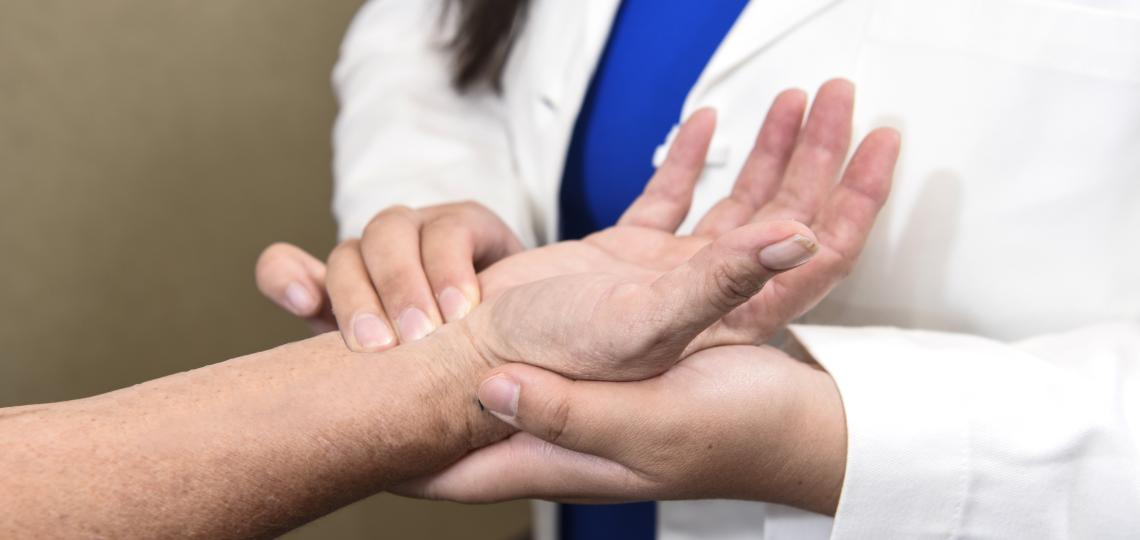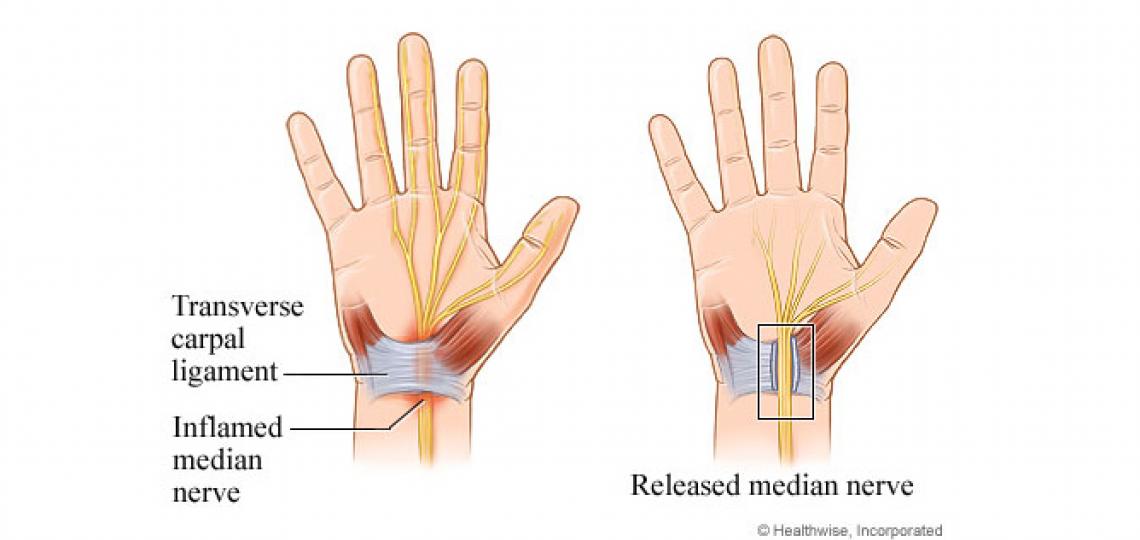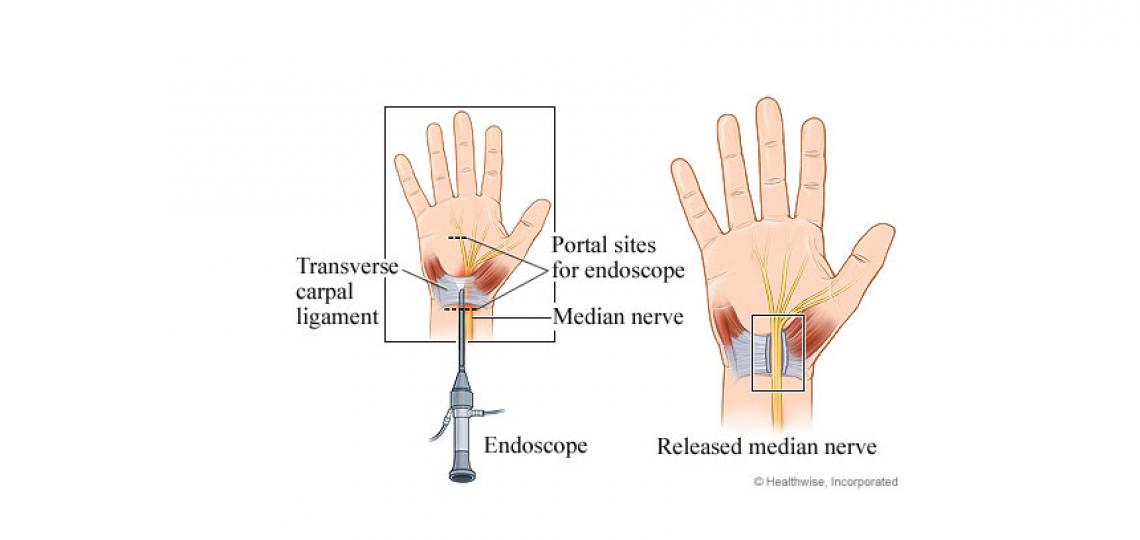
Baylor Medicine plastic surgery hand specialists are leaders in diagnosing and treating a wide range of hand conditions, offering both surgical and non-surgical options, for patients of all ages. From relieving carpal tunnel syndrome to correcting congenital hand deformities, repairing traumatic injuries and offering innovative treatments like Botox for Raynaud’s phenomenon, their skill and precision restore function, alleviate pain and improve quality of life of patients.
With cutting-edge techniques and a commitment to personalized care, they are dedicated to helping patients regain strength, mobility, and confidence in their hands. Whether addressing a simple concern or tackling complex reconstructive challenges, our specialists deliver exceptional outcomes with compassion and expertise.
What is carpal tunnel Syndrome?
Carpal tunnel syndrome is numbness, tingling, weakness, and other problems in your hand because of pressure on the median nerve in your wrist. This nerve runs through the carpal tunnel, which is found in your wrist.
What causes carpal tunnel syndrome?
Carpal tunnel syndrome occurs when a combination of health conditions and activities puts pressure on the median nerve. The median nerve passes through the carpal tunnel in your wrist. This pressure leads to symptoms.
Anything that decreases the amount of space in the carpal tunnel or increases the amount of tissue in the tunnel can lead to carpal tunnel syndrome. So can anything that makes the median nerve more sensitive.
Things that help cause carpal tunnel syndrome include:
- Conditions or illnesses that can cause or contribute to arm pain or swelling in the joints and soft tissues in the arm, or to reduced blood flow to the hands. These include obesity, rheumatoid arthritis, gout, diabetes, lupus, and hypothyroidism.
- Repeated hand and wrist movements. They can cause the membranes around the tendons to swell (tenosynovitis).
- Broken wrist bones, dislocated bones, new bone growth from healing bones, or bone spurs. These can take up space in the carpal tunnel and put more pressure on the median nerve.
Carpal tunnel syndrome is a common work-related condition. It can be caused by work that requires:
- Forceful or repetitive hand movements
- Hand-arm vibration
- Working for long periods in the same or awkward positions
Carpal tunnel syndrome is even more likely if you have these work-related issues along with other health conditions.
In some cases, the cause of carpal tunnel syndrome can't be found.
Open carpal tunnel release surgery
During open carpal tunnel release surgery, the transverse carpal ligament is cut, which releases pressure on the median nerve and relieves the symptoms of carpal tunnel syndrome.
An incision is made at the base of the palm of the hand. This allows the doctor to see the transverse carpal ligament. After the ligament is cut, the skin is closed with stitches. The gap where the ligament was cut is left alone and eventually fills up with scar tissue.
If you have open carpal tunnel release surgery, you typically do not need to stay in the hospital. It is usually done under local anesthetic, and you can go home on the same day.
Endoscopic carpal tunnel release surgery
In endoscopic carpal tunnel release surgery, the transverse carpal ligament is cut. This releases the median nerve.
Endoscopic surgery uses a thin tube with a camera attached (endoscope). The endoscope is guided through a small incision in the wrist (single-portal technique) or at the wrist and palm (two-portal technique). The endoscope lets the doctor see structures in the wrist (such as the transverse carpal ligament) without opening the entire area with a large incision.
The cutting tools used in endoscopic surgery are very tiny. They also are inserted through the small incisions in the wrist or wrist and palm. In the single-portal technique, one small tube contains both the camera and a cutting tool.
During endoscopic carpal tunnel release surgery, the transverse carpal ligament is cut. This releases pressure on the median nerve. So the symptoms of carpal tunnel syndrome are relieved.
Preventing carpal tunnel syndrome
In daily routines at home or while doing hobbies, think about changing activities in which you make repeated finger, hand, or wrist movements. Train yourself to use other positions or techniques that won't stress your hand or wrist.
Take good care of your general health. This includes staying at a healthy weight, not smoking, and getting regular exercise. Restrict your salt intake if you tend to retain fluid.
Keep your arm, hand, and finger muscles strong and flexible. Keep your hands in a neutral position. For example, keep your wrists straight or only slightly bent. Avoid activities that bend or twist the wrists for long periods of time. Use hand and wrist movements that spread the pressure and motion evenly throughout your hand and wrist.
Take breaks, and rest your hands. Switch hands and change positions often when you are doing repeated motions. Stop any activity that you think may be causing finger, hand, or wrist numbness or pain.
Wear a wrist splint. A splint can keep your wrist in a neutral position—that is, not bent too far forward or back—and reduce the stress on your fingers, hand, or wrist. Wear a wrist splint when you cannot control your wrist motion, such as while sleeping.
If you feel that certain work activities are causing finger, hand, or wrist numbness or pain, talk to your human resources department. Ask about different ways of doing your job, changes in your equipment, other job assignments, or the possibility of an ergonomics evaluation of your work space and procedures.
© 2016-2019 Healthwise, Incorporated.








 Credit
Credit

